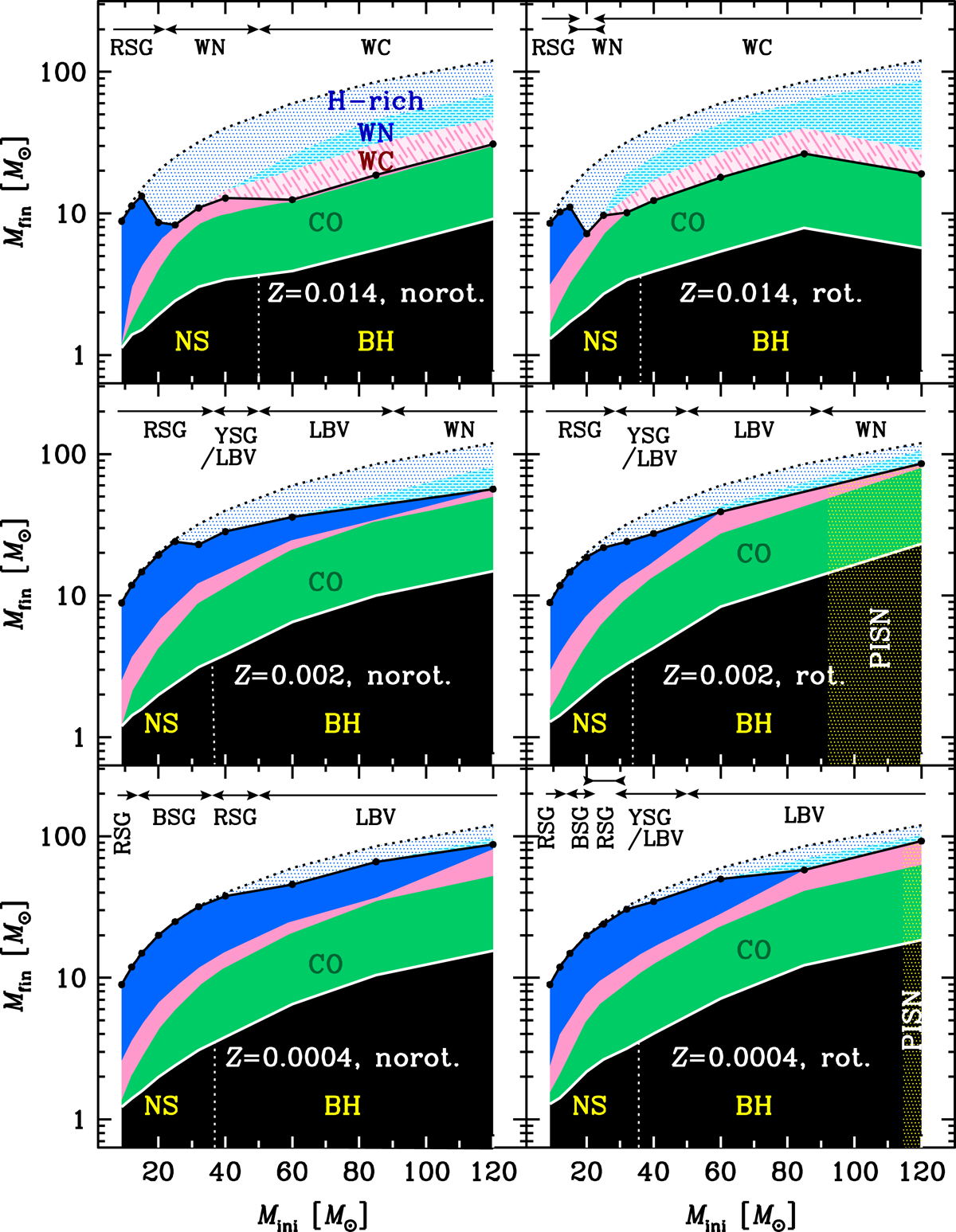Fig. 15.

Masses of the stellar remnants and under the form of SN and wind ejecta are shown as a function of the initial mass of stars for rotating and nonrotating models at three metallicities. The masses that remain locked into the BH or NS correspond to the solid black region. The labels at the top of each subpanel indicate the type of the core collapse progenitors. The yellow hatched zone in the lower right panel labeled PISN corresponds to the domain of masses that is predicted to produce PISNe. We also indicate the masses ejected at the time of the SNe (assuming a successful explosion for all masses) that are rich in carbon, oxygen, and other α-elements (solid green regions labeled CO), or in H-burning processed material (solid pink regions), or with the same abundances as the initial one (solid blue regions). The hatched zones are the masses ejected by stellar winds, which are color coded in blue (H-rich), cyan (H-poor, labeled WN), and pink (H-free, labeled WC).
Current usage metrics show cumulative count of Article Views (full-text article views including HTML views, PDF and ePub downloads, according to the available data) and Abstracts Views on Vision4Press platform.
Data correspond to usage on the plateform after 2015. The current usage metrics is available 48-96 hours after online publication and is updated daily on week days.
Initial download of the metrics may take a while.


